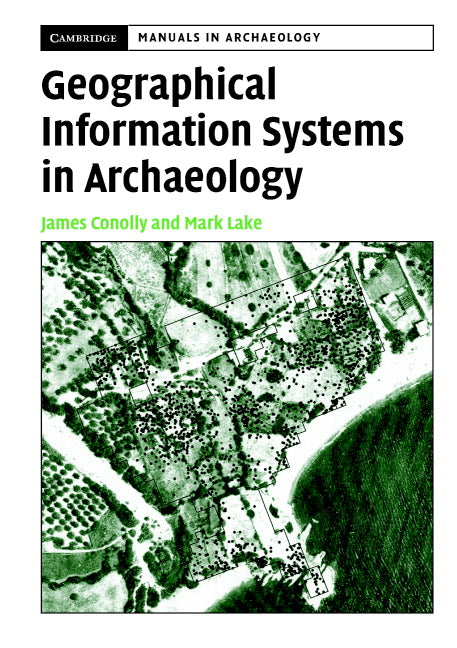Freshly Printed - allow 8 days lead
Couldn't load pickup availability
Geographical Information Systems in Archaeology
A comprehensive introduction to the use of Geographical Information Systems as a research tool in archaeology.
James Conolly (Author), Mark Lake (Author)
9780521797443, Cambridge University Press
Paperback, published 4 May 2006
360 pages
24.1 x 17.3 x 2 cm, 0.64 kg
' … the book is well written, lavishly illustrated and attractively presented. The authors constantly demonstrate their considerable knowledge and skill in GIS, while making the technical, mathematical and computer issues easily comprehensible.' South African Archaeological Bulletin
Geographical Information Systems has moved from the domain of the computer specialist into the wider archaeological community, providing it with an exciting new research method. This clearly written but rigorous book provides a comprehensive guide to that use. Topics covered include: the theoretical context and the basics of GIS; data acquisition including database design; interpolation of elevation models; exploratory data analysis including spatial queries; statistical spatial analysis; map algebra; spatial operations including the calculation of slope and aspect, filtering and erosion modeling; methods for analysing regions; visibility analysis; network analysis including hydrological modeling; the production of high quality output for paper and electronic publication; and the use and production of metadata. Offering an extensive range of archaeological examples, it is an invaluable source of practical information for all archaeologists, whether engaged in cultural resource management or academic research. This is essential reading for both the novice and the advanced user.
1. Introduction and theoretical issues in archaeological GIS
2. First principles
3. Putting GIS to work in archaeology
4. The geodatabase
5. Spatial data acquisition
6. Building surface models
7. Beginning exploratory data analysis
8. Spatial analysis
9. Map algebra, surface derivatives and spatial processes
10. Regions: territories, catchments and viewsheds
11. Routes: networks, cost paths and hydrology
12. Maps and digital cartography
13. Maintaining spatial data.
Subject Areas: Archaeological science, methodology & techniques [HDW]


